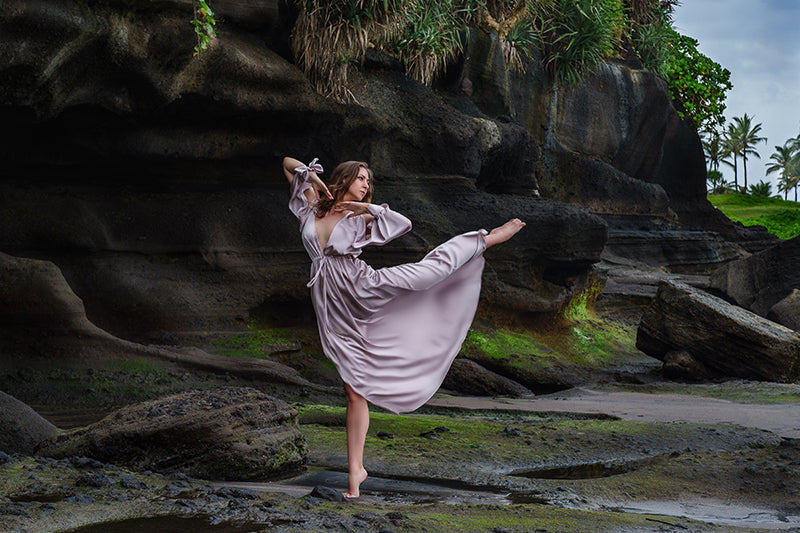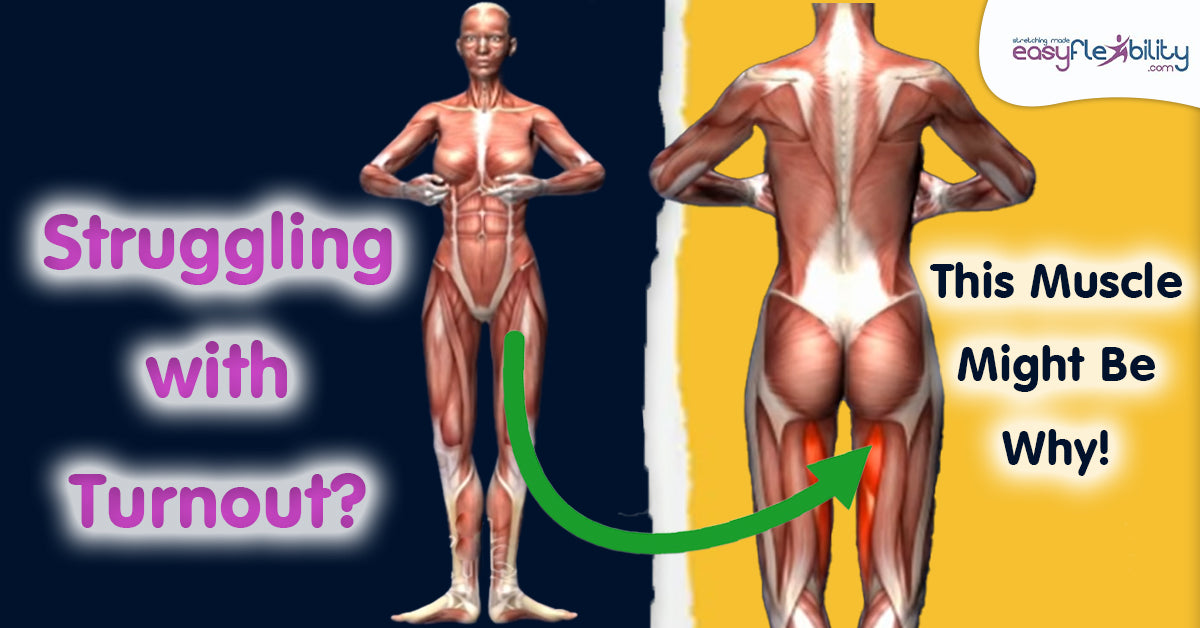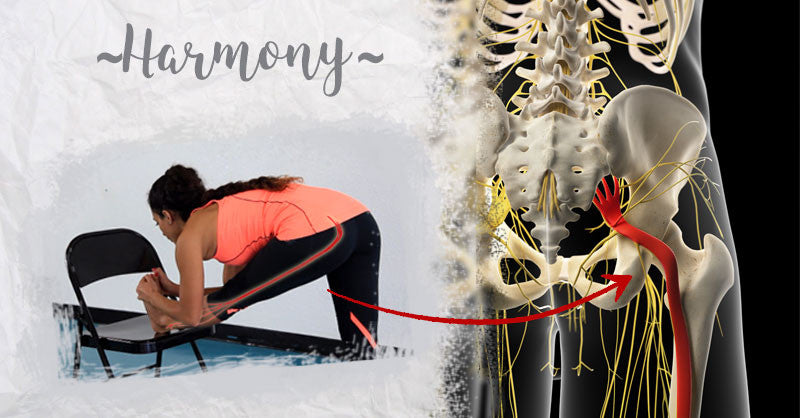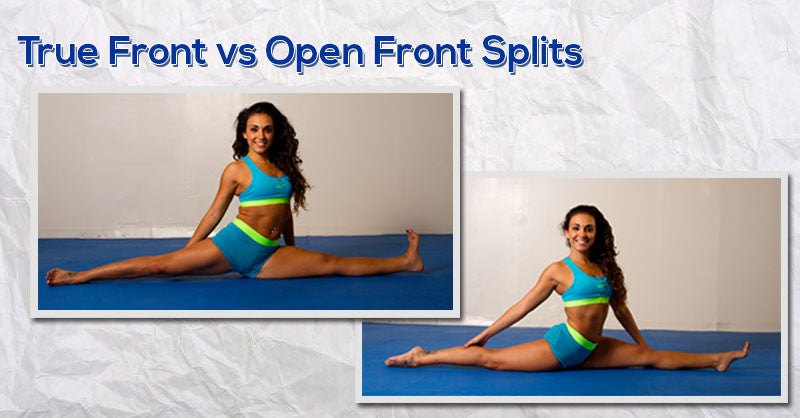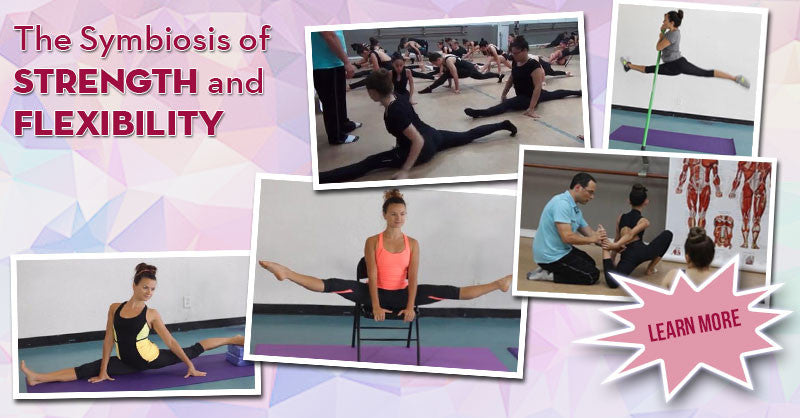How to Improve Flexibility for Higher Leg Extensions in Ballet
Posted by EasyFlexibility Team on
How to Improve Flexibility for Higher Leg Extensions in Ballet

Many dancers dream of achieving higher leg extensions in ballet, but you no longer have to dream about it! Here at EasyFlexibility, we understand that improving flexibility for leg extensions might seem difficult, but it doesn’t have to be. Paul Zaichik has cracked the secret code and created programs specifically designed to help you enhance your flexibility and strength to reach those beautiful, high leg lifts.
This article will take a deep dive into improving flexibility for higher leg extensions, including the science behind flexibility, essential stretches, strength exercises, and how our EasyFlexibility program can help you achieve your goals faster, without risking injury.
Flexibility vs. Strength in Leg Extensions: The Debate
One of the most significant points raised by EasyFlexibility is the strength vs. flexibility debate. While many dancers assume that improving leg extensions is solely about getting stronger, it’s actually a combination of flexibility in the hamstrings, hip flexors, adductors, and glutes, combined with the necessary strength to hold the leg high.
Here at EasyFlexibility, we target this balance by:
- Increasing range of motion: Our targeted stretching techniques work to lengthen muscles safely and efficiently, helping you achieve better extension heights without relying only on brute strength.
- Improving muscle engagement: By training specific muscles to work together, dancers can improve leg lifts and holds without unnecessary tension in surrounding muscles.
General Key Stretches to Improve Flexibility for Higher Leg Extensions
To achieve high leg extensions, focusing on key stretches is essential. Whether you're aiming for better arabesques or devant extensions, incorporating these stretches into your routine will help you improve flexibility:
1. Hamstring Stretch
Tight hamstrings can limit your leg extension. Regularly stretching them increases your range of motion and reduces the risk of injury.
- How to do it: Sit on the floor with your legs extended. Reach forward to touch your toes and hold for 30 seconds.
2. Hip Flexor Stretch
Flexible hip flexors are crucial for higher front and side extensions.
- How to do it: Start in a lunge with your back knee on the floor, and push your hips forward while keeping your torso upright.
3. Frog Stretch (Adductor Stretch)
The adductors (inner thighs) are critical for maintaining turnout during leg extensions.
- How to do it: Lie on your stomach, bend your knees, and bring your feet together while allowing your knees to slide outward.
4. Quadriceps Stretch
The quads are essential for back leg extensions (arabesque) and overall leg height.
- How to do it: Stand and pull one foot toward your glutes, holding the stretch for 20-30 seconds.
Here at EasyFlexibility, we recognize that each dancer’s body is different. That’s why our Zaichik Stretching Techniques (ZST) isolate specific muscle actions, targeting areas like the hip flexors and hamstrings for a deeper, more efficient stretch. ZST incorporates active flexibility training, meaning you stretch and strengthen simultaneously, which gives you both flexibility and control for higher leg extensions.
Strength Training for Higher Leg Extensions
While flexibility is key, strength is what helps you hold those leg extensions with control. Here at EasyFlexibility, we know that it’s not just about lifting your leg—it’s about maintaining that lift with elegance.
Here are a few strength exercises to complement your flexibility training:
- Plié Squats: Strengthens the quads, glutes, and hamstrings—all critical for leg control.
- Leg Lifts: Targets the hip flexors and core to help you lift and hold your leg higher.
- Side Leg Raises: Strengthens the outer thighs and glutes to help with side extensions.
Integrating strength training with active stretching will help you see faster results. You’ll not only achieve higher extensions, but you’ll also be able to hold them longer without fatigue. Paul Zaichik’s methods ensure that you gain both flexibility and strength simultaneously, which is the ultimate goal for any dancer.
The Role of Turnout in Leg Extensions
Turnout, or the external rotation of the legs from the hips, is essential for achieving those graceful high leg extensions. Tight hips or limited turnout can make achieving these extensions feel impossible, but don’t worry—turnout can be improved with targeted flexibility work.
Our program includes stretches like the butterfly stretch, pigeon pose, and supine frog stretch to help you safely deepen your turnout, which will significantly improve the height and line of your leg extensions.
At EasyFlexibility, you’ll also work on maintaining pelvic alignment, ensuring that your leg extensions look clean and graceful, even as they reach higher than ever before.
Preventing Injuries While Improving Leg Extensions
One of the biggest challenges dancers face while trying to improve flexibility is the risk of injury. Overstretching or pushing your body too hard can lead to painful setbacks like hamstring tears and hip issues. At EasyFlexibility, we emphasize safe stretching practices that prioritize long-term health and progress.
Tips for Safe Stretching:
- Warm up properly: Always start with dynamic stretches like leg swings or light cardio to get your muscles warm before deeper stretching.
- Never force a stretch: Gradually deepen your stretch over time. Forcing a stretch can cause injury.
- Listen to your body: Stretching should be uncomfortable, but never painful. If you feel pain, stop immediately.
The Zaichik Stretching Techniques are designed to avoid overstretching by isolating specific muscles and engaging them actively. You’ll see faster results without overloading your joints or risking injury.
How EasyFlexibility Can Help with Leg Extensions
Here at EasyFlexibility, we understand that improving flexibility for higher leg extensions in ballet may seem hard, but it really isn’t! Our programs, designed by Paul Zaichik, focus on achieving a balance between strength and flexibility, allowing dancers to improve their leg extensions faster and safer than traditional methods.
Our Zaichik Stretching Techniques (ZST):
- Increase range of motion in muscles specific to ballet movements, like the hip flexors and adductors.
- Strengthen muscles while stretching, which means you can hold your leg extensions with more control and for longer periods.
- Prevent injuries by focusing on safe stretching techniques, avoiding overstretching or compensation from the wrong muscle groups.
Unlike traditional methods that only focus on either strength or flexibility, the EasyFlexibility program combines both—providing you with long-lasting flexibility and strength to maintain higher leg extensions. Plus, our online programs allow you to practice from home, with detailed videos and guides tailored to your needs.
Many dancers dream of higher leg extensions, but you no longer have to dream about it! Paul Zaichik has created programs specifically designed to help you. So, why wait? Start improving your leg extensions today with our unique EasyFlexibility Leg Extension Program, and see results sooner than you think!
Conclusion
Improving flexibility for higher leg extensions is more than just stretching—it’s about mastering the balance between strength, technique, and flexibility. With the EasyFlexibility method, you’ll see faster, longer-lasting results without risking injury. By incorporating the key stretches, strength exercises, and active flexibility techniques mentioned in this guide, you’ll be well on your way to achieving the high leg lifts that every dancer dreams of.
Ready to improve your leg extensions? Get started with our EasyFlexibility Leg Extension Program today and start seeing results in no time!
Frequently Asked Questions (FAQ)
1. How can I improve flexibility for higher leg extensions in ballet?
Improving flexibility for higher leg extensions in ballet requires a balance between stretching and strengthening key muscles like the hamstrings, hip flexors, and glutes.
2. What are the best stretches for increasing leg extension height?
The best stretches for improving leg extension height include hamstring stretches, hip flexor stretches, frog stretches for the adductors, and quadriceps stretches.
3. How long does it take to see results with EasyFlexibility?
With EasyFlexibility, dancers typically see flexibility improvements faster than with traditional methods. The program’s combination of active stretching and strengthening helps you achieve results in a shorter time.
4. How does EasyFlexibility prevent injuries while stretching?
EasyFlexibility emphasizes safe stretching by targeting specific muscles and engaging them actively during stretches, preventing overstraining and reducing the risk of injuries like hamstring tears.





